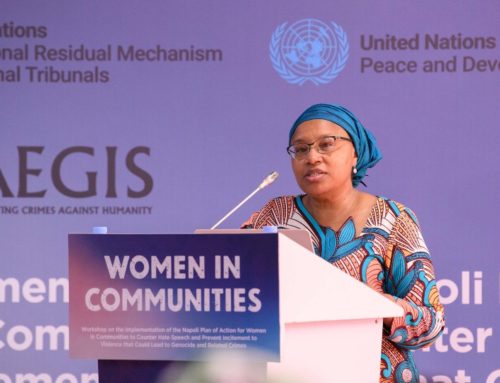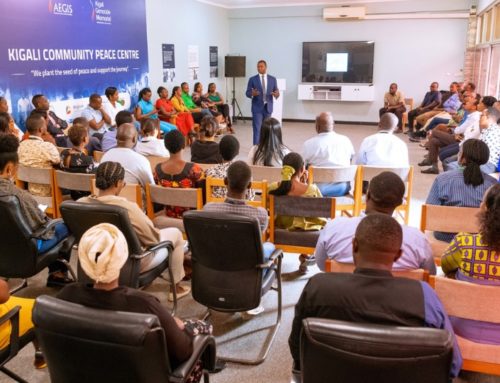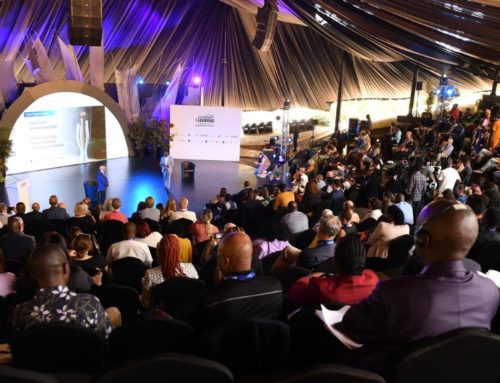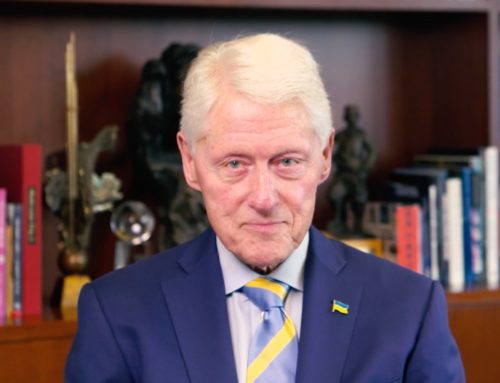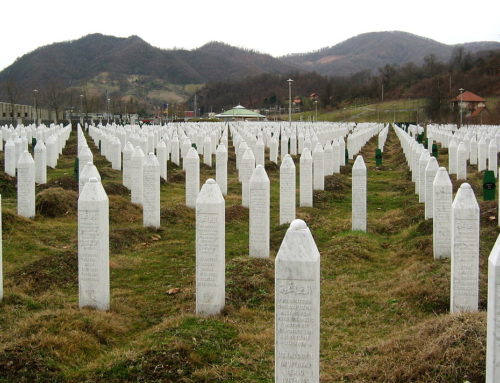 Full text of the Valedictory Address by Dr Mukesh Kapila, Special Representative of the Aegis Trust and Professor of Global Health and Humanitarian Affairs at the University of Manchester, UK at the Fourth International Roundtable Conference at the Tata Institute of Social Science, Mumbai, India, “Structuring Peace: the State and Conflict Transformation: prospects and challenges in South Asia”, 17-18 April 2012.
Full text of the Valedictory Address by Dr Mukesh Kapila, Special Representative of the Aegis Trust and Professor of Global Health and Humanitarian Affairs at the University of Manchester, UK at the Fourth International Roundtable Conference at the Tata Institute of Social Science, Mumbai, India, “Structuring Peace: the State and Conflict Transformation: prospects and challenges in South Asia”, 17-18 April 2012.
To make “peace”, we must understand “war”. Inevitably this is a complex subject and there are many theories of conflict analysis. So, it may be useful to identify some basic understandings that could be practically useful.
First, to recognise that all conflicts have logic. They are not random, irrational or unpredictable disturbances. Conflicts have winners and losers, the corollary being that it is essential to understand the interests and motivations of the stakeholders. We see this in every conflict around the world; for example, most notably at present in Syria and in Sudan.
Second, all conflicts have a “career”: they smoulder, flare up, die down, re-ignite, extinguish. But they always remain flammable. As suggested by Paul Collier’s work at the World Bank, the best predictor of future conflict is a past history of conflict. In that sense, a society that has once tasted conflict is always at risk of falling prey to it again. And memories of conflict get transmitted down from generation to generation – sometimes over hundreds of years as we saw in Serbia in relation to the Kosovo war. Conflicts come in cycles and can be perpetually recycled.
Third, it is vital to dissect the internal anatomy of a conflict. In doing so, it is useful to distinguish between the underlying vulnerabilities, the proximate triggers, and the perpetuating factors. The underlying vulnerabilities are the pre-disposing factors to a conflict that may often be very longstanding i.e., the “fuel”. The proximate triggers to violence are the immediate causes i.e. the “match that ignites the fuel”, and the factors that perpetuate the conflict are like the “oxygen that keeps the fire burning”. This helps us to decide on the optimal points for intervention to break the conflict cycle… or, at least, not to make it worse by careless meddling.
If it is most important to know where to intervene within a conflict, it is equally crucial to judge when to intervene. That is my fourth point: Conflicts have to be right for solving—and much effort and resources can be wasted unless there is clarity on where we are at in the “conflict cycle” and, therefore, what are the realistic objectives for influencing the “conflict dynamics”. In other words, the conflict-breakers have to decide whether they are aiming for resolution, mitigation, or only containment. In current international parlance, this is reflected in strategies for peace-making, peace-keeping, and peace-building.
The brute evidence of history suggests that most conflicts are ultimately resolved only when they hurt enough, and when one side or the other finally wins the argument through the application of physical force or equivalent coercion, even if dressed up in the face-saving compromise language of a peace agreement.
Finally, one could observe that conflict is not always bad—and trying to stop it prematurely, even if one succeeds, is not always a smart contribution to history. Arguably, this could be said for the wars in the former Yugoslavia during the 1990s; although armed hostilities eventually ceased after strong US-led international pressure, the result endorsed the outcome of the war; that is, an identity-based partition of the country and a possible freezing—but not resolution—of the conflict.
The painful real history of the world is that enlightened, fairer societies have often required forging in the crucible of conflict when the oppressed have had to fight for their rights against oppressors whose behaviour is beyond the pale and who will not be reasoned out of their aggression. Indeed, some would go as far as saying that no human rights have ever been gained by any group except through struggles that have required the forceful confrontation of vested interests. The genocidal wars in Darfur and now in the Nuba Mountains of Sudan are a tragic contemporary example. We have also learned, for example, that shabby deals for peace without justice and honour usually unravel sooner or later, as happened several times in Sierra Leone. This is implicitly understood in contemporary practice where the more common and realistic objective is the reduction of deadly or armed violence, as opposed to the resolution of the conflict itself; as, for example, in Palestine. But the logic of any conflicting side is to win and it is debatable whether or not it is possible to pursue a conflict effectively without engaging in some level of violence or aggressive coercion. This is exemplified by Afghanistan where sustainable peace is going to take time to emerge.
The theory I have just outlined emerges from empirical observations of past and current experience of the world we live in. How do we link that to the business of development, which is the core purpose of good governance and central to the social contract between citizens and state – at least in democratic societies?
We live in an increasingly rebellious world where the revolution in communications technologies and a globalising tendency mean that both dreams and discontents are rapidly transmitted across communities, continents and cultures. In such a world, development is no longer what someone – a benevolent patron or government – does to you but what you do to yourselves to liberate your own self to make your own choices, assert your rights and achieve your fullest potential as a human being.
Such an outlook is captured in the notion of human security as part of the larger freedom of people and societies. The concept signifies not only protection from violence but also the enjoyment of well-being and basic social, economic and political rights. The notion is attractive because of its comprehensiveness, inclusivity and, above all, the liberal world view and accompanying values system on which it is obviously predicated. But there are problems over the notion that building human security through development brings peace and security. Consider, for example, that many societies in history have turned the corner from war to peace before any wide-scale development—at least that benefited sufficient numbers of ordinary people. There is plenty of evidence that “poor people generally don’t rise up in revolt,” but have to be manipulated to do so, as perhaps happened earlier in Nepal’s unhappy recent past. Conversely, economic progress does not always insulate against conflict.
Here, it is useful to distinguish three different working approaches that may be called “working around, or in, or on conflict”.
The intention of working around conflict is to avoid the detrimental impact of the conflict on the achievement of the purposes for which development aid is being given.
The second approach of working in conflict is bolder: classically, this is what constitutes traditional humanitarian relief where attempt is made to reach innocent civilians while the conflict continues around them.
However, from the strategic peace and security angle, we are interested in working on conflict, that is, using development action to transform a conflict.
Let me use my personal experience in the health sector to outline what I mean. The health sector provides many examples of Track II or informal diplomacy, and the experience is generalizable to other sectors of human development. Using health as a bridge for peace, we have learned a great deal since the early experiences in Central America in the 1980s, the Balkans during the 1990s, and subsequently in Afghanistan and West Africa. In 1981 the World Health Assembly passed a resolution stating that “the role of physicians and other health workers in the preservation and promotion of peace is the most significant factor for the attainment of Health For All.”
However, what are the experiences and the evidence for effectiveness of a “health track to peace”? Work done by McMaster University in Canada and at the World Health Organization (WHO) has postulated several “peace-health linkage mechanisms”:
Pursuing common issues or interests brings protagonists together, such as when planning for recovery in Mozambique before the peace agreement was signed stimulated progress toward peace.
Evoking and extending altruism generates positive feelings among parties, such as in the polio vaccination days in Afghanistan and many other countries.
Identifying and replacing rumours with facts rebuilds mutual confidence, such as that created between Crimean and Ukrainian authorities regarding the cholera threat among displaced populations.
Redefining the prevalent norms changes the terms of the debate and opens new space for discussion, for example “war” may be seen as a test of manhood and adventure but can be redefined as a “disaster.”
Confronting demonized stereotypes can bring about psychological healing, such as when Sri Lankan trauma counselling centres were established for all sides.
Regenerating a sense of shared identity to keep basic human connections going across the conflict divide; for example, with the establishment of a public health surveillance reporting system in Northern Alliance health districts in Afghanistan where workers were willing to report to the Taliban-controlled Ministry of Health in Kabul.
Health access negotiation skills can mediate barriers to medical care distribution; for example, the mediation required between the two sides in the Sudan conflict to allow immunization teams to move about forged contacts that subsequently were able to be maintained through formal diplomacy.
Personal solidarity actions by healthcare professionals, especially respected doctors, can have a demonstrably powerful effect; for example, in the Malaccas, Indonesia, where “personal witnesses” accompanied the injured not just to provide care and protection but also to diffuse tensions.
Campaigning by healthcare professionals against “unjust” tactics in wars can have powerful moral and, eventually, political force to influence public and official opinion; such as when the documentation of the human impact of anti-personnel landmines led to the landmark Ottawa Treaty.
In summary, these mechanisms appear to seek one or more of the following:
- to address differences or divisions, polarization or discrimination, as grievance factors in conflict;
- to provide common neutral technical space for confidence building;
- to appeal to common—even utilitarian—interests to solve a problem that cannot be easily tackled by one side alone;
- to maintain connectivity (i.e., maintain humanity in a brutalized environment) between opposing sides so as to bring hope, and to build or rebuild human relationships and ethical values.
A balanced judgment on the impact of health-as-a-bridge-for-peace work would be that it can, under specific circumstances, reduce or mitigates levels of violence at the tactical level. It can also provide a useful channel or entry point for political peacemakers to come in. It can help to maintain or even consolidate peace once a fragile peace has been attained by political efforts. Finally, it could be useful for making an early start to addressing some of the original underlying factors to the conflict.
Thus, development-peace linkages (DPL) may be a useful “second track instrument” for peacemaking and peace building, and ought to be valued in that role. Much more could be done to maximize this stabilisation role, especially in fragile or transitional situations between conflict and peace, possibly by development and political practitioners working alongside one another more often. But aid is neither the panacea nor the magic pill for all the ailments of conflict situations. To get the best out of such linkage, it has to be part of wider and more serious peace and security processes.
With this realistic understanding of what development-peace linkages can achieve under the right conditions, several further questions arise. How can the best practices of DPL—both in relation to working in conflict, and working on conflict—be codified for systematic use, for example, through suitable guidelines and standards? What capacities should be developed to promote this as a practical approach, and can impact be measured with greater precision? Would it be appropriate to offer such development-peace linkages as a second track channel for peacemaking efforts, on a predictable basis in major conflicts?
The focus of practical action must be at the country and community level where precise context-specific analysis is essential to find the optimal entry points for the DPL approaches that are most likely to be effective. One prescription cannot suit all ailments. The creation of national DPL networks in war-torn countries could be a useful device to bring together interested stakeholders to expand access and allow assistance to reach people caught up in a conflict. This could go further by attempting, through practical example, to promote international humanitarian law and reduce levels of violence. DPL work could promote a wider understanding in conflict-riven societies about the underlying grievance factors that fuel the conflict, and could lobby for action to address them. More ambitiously, DPL could proactively seek to counter the culture of impunity where this is a particularly serious matter, as we have in Sudan today.
What can we conclude on the question: can development heal broken societies? The jury remains out on the question. In short, I am not convinced that economic or social development – by itself – buys peace. But is it possible to conduct such development in particular ways in the context of conflict so as to influence its dynamics? Quite possibly, yes, provided that there are acceptable terms of engagement between the political and security side, on one hand, and, on the other, development and humanitarian assistance efforts that will get to underlying roots of conflict to find sustained solutions.

